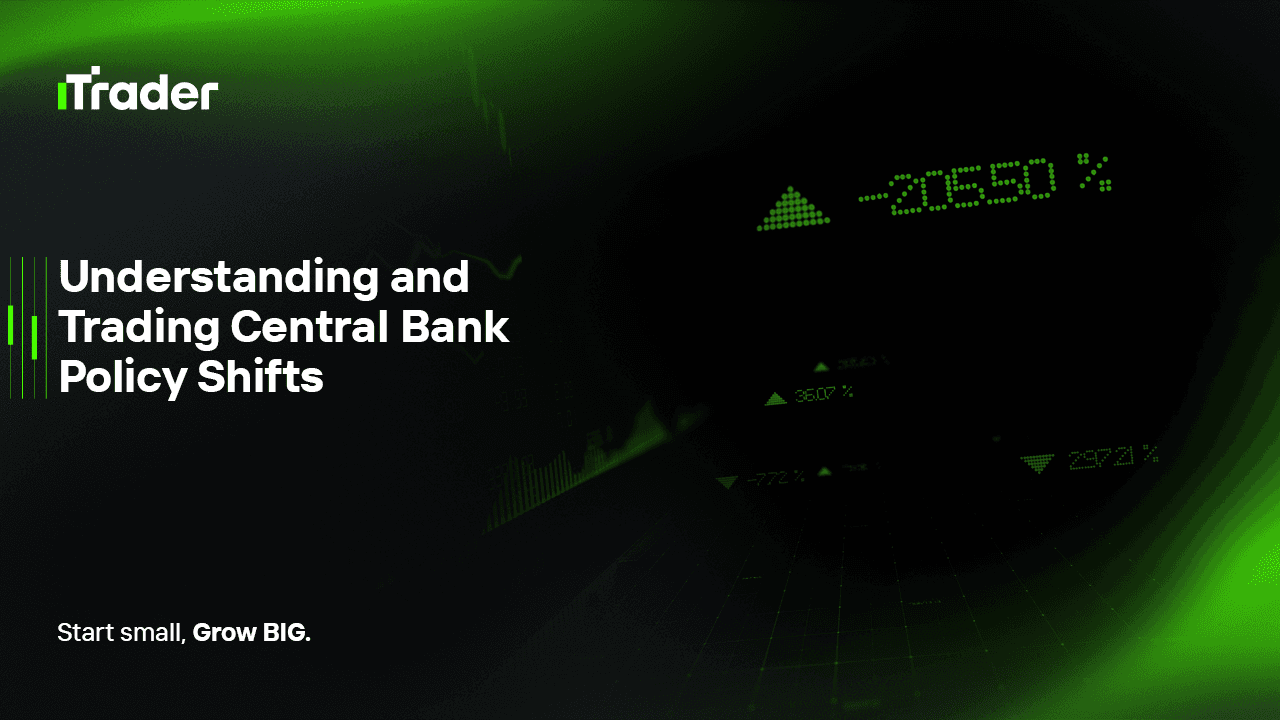2025-08-28
The forex market is one of the most sensitive arenas in global finance. Exchange rates not only respond to day-to-day technical fluctuations but also to major macroeconomic policy decisions. Among these, the most powerful drivers are monetary policy shifts by central banks.
Institutions like the U.S. Federal Reserve (Fed), European Central Bank (ECB), Bank of Japan (BOJ), and Bank of England (BoE) regularly influence global capital flows through interest rate decisions, quantitative easing (QE), balance sheet adjustments, and policy guidance. These decisions ripple across the forex market, creating both risks and opportunities.

For prop traders, understanding and anticipating central bank policy shifts is not just about catching a trade—it’s a strategic edge. Prop firm challenges measure not only short-term profitability but also how effectively traders manage risk in volatile, news-driven conditions.
Central banks operate with three main goals:
They achieve these through various policy tools:
Interest rates are the most direct channel through which central banks influence currency values.
This concept underpins the classic Interest Rate Differential strategy, where traders position based on relative yields between economies.
Markets react not only to the decision itself but also to how it aligns with prior expectations:
Central bank policy affects currencies via multiple channels:
In certain cases, central banks intervene directly, buying or selling their currency to stabilize exchange rates. The BOJ, for instance, has stepped in to curb excessive yen weakness.
When central banks follow opposite policy paths, strong forex opportunities emerge. Example: Fed tightening vs. ECB easing led to EUR/USD weakness in 2014–2015.
For prop traders, the risk around central bank events is heightened volatility. Effective practices include:
The Swiss National Bank removed its EUR/CHF floor, causing the franc to surge ~30% within minutes. Many retail and institutional traders were wiped out.
Successive Fed hikes boosted USD strength across major pairs, rewarding traders who anticipated the policy cycle.
Policy tweaks and interventions triggered strong yen volatility, creating both risks and short-term opportunities.
Since firms evaluate risk discipline, traders must:
Prop traders need to interpret not just the numbers but also the tone of central bank communication. A single phrase in a press conference can move markets. Skills include:
Central bank monetary policy is one of the dominant forces shaping forex markets. For prop traders, mastering this area provides both protection against unnecessary risk and an edge in capturing high-probability setups.
Ultimately, central bank policy sets the rules of the forex game. Traders who can read, anticipate, and adapt to these rules are far more likely to pass prop firm challenges and thrive in live market conditions.
© 2025 iTrader Global Limited | 회사 등록번호: 15962
iTrader Global Limited는 코모로 연방 앙주앙 자치섬의 무잠두(Hamchako, Mutsamudu)에 위치하고 있으며, 코모로 증권위원회(Securities Commission of the Comoros)의 인가 및 규제를 받고 있습니다. 당사의 라이선스 번호는 L15962/ITGL입니다.
iTrader Global Limited는 “iTrader”라는 상호로 운영되며, 외환 거래 활동에 대한 인가를 받았습니다. 회사의 로고, 상표 및 웹사이트는 iTrader Global Limited의 독점 재산입니다.
iTrader Global Limited의 다른 자회사로는 iTrader Global Pty Ltd가 있으며, 이 회사는 호주 회사 등록번호(ACN): 686 857 198을 보유하고 있습니다. 해당 회사는 Opheleo Holdings Pty Ltd의 공식 대리인(AFS 대표 번호: 001315037)이며, Opheleo Holdings Pty Ltd는 호주 금융서비스 라이선스(AFSL 번호: 000224485)를 보유하고 있습니다. 등록 주소는 Level 1, 256 Rundle St, Adelaide, SA 5000입니다.
면책 조항: 이 회사는 본 웹사이트에서 거래되는 금융 상품의 발행인이 아니며 이에 대해 책임을 지지 않습니다.
위험 고지: 차액결제거래(CFD)는 레버리지로 인해 자본 손실이 빠르게 발생할 수 있는 높은 위험을 수반하며, 모든 사용자에게 적합하지 않을 수 있습니다.
펀드, CFD 및 기타 고레버리지 상품의 거래에는 전문적인 지식이 요구됩니다.
연구 결과에 따르면 레버리지 거래자의 84.01%가 손실을 경험하고 있습니다. 거래에 참여하기 전에 관련 위험을 충분히 이해하고 전체 자본을 잃을 준비가 되어 있는지 확인하십시오.
iTrader는 레버리지 거래로 인해 발생하는 손실, 위험 또는 기타 피해에 대해 개인 또는 법인에게 전적인 책임을 지지 않음을 명시합니다.
이용 제한: iTrader는 해당 활동이 법률, 규제 또는 정책에 따라 금지된 국가의 거주자를 대상으로 본 웹사이트나 서비스를 제공하지 않습니다.